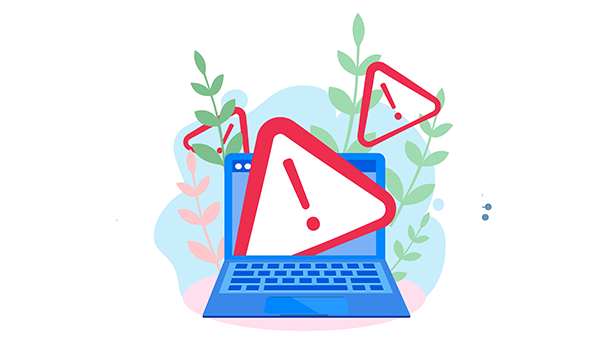
Zero-Day is a term that is used for recently discovered vulnerabilities that hackers can use to target systems. These threats are dangerous because the recipient is unaware of their existence. Exploitation can go on unnoticed for years, and then fetch large sums of money on the black market.
Businesses often have multiple threats to contend with. Cyber attacks are of increasing concern. A zero-day exploit is one of the most serious malware threats.
A cyber attack can have bad consequences for businesses. Hackers can target data, steal money or intellectual property, and adversely affect operations. No company is immune. Even global giants like Google face at least 22 unforeseen attacks each year. Cyber attacks are inevitable. However, there are certain steps that you can take to protect yourself. Here’s why zero-day exploits are dangerous, and how you can identify and prevent them from happening.
What Is a Zero-Day Exploit?

Hackers can use a zero-day exploit, a previously undiscovered security flaw in your software or hardware, to breach your system. Also known as zero-hour exploits or day0 exploits, the origin is the same, stressing the depth of the problem. After someone discovers such a vulnerability, developers have no time to fix the problem before it snowballs into something big. Zero-day exploits may also be called zero-day vulnerabilities or zero-day attacks. Each term has its own implications.
- Zero-Day Exploit – The method hackers use to attack software.
- Zero-Day Vulnerability – Refers to the undiscovered flaw in the system.
- Zero-Day Attack – Refers to the action taken by hackers when they take advantage of the vulnerability to breach your system.
‘Undiscovered’ is a very important term when it comes to zero-day vulnerabilities, as these must be unknown to the system’s creators to be considered as ‘zero-day vulnerability. A security vulnerability stops being a ‘zero-day vulnerability once the developers have knowledge of the problem and release a patch. The people who carry out such attacks may be
- Cybercriminals with a financial motivation.
- Hacktivists looking to further their political cause or agenda.
- Corporate hackers looking to get information about the competition.
- For-profit hackers who locate vulnerabilities to sell to others, instead of exploiting them themselves.
How Does the Zero Day Attack Work?
Most attacks generally follow a set pattern
Step 1 – Your developers create a system with a zero-day vulnerability that the former have no clue of.
Step 2 – After the system goes live, the hacker finds a vulnerability.
Step 3 – The hacker authors and executes malicious code to exploit the said vulnerability and breach the system.
Step 4 – The public or developers find a problem and fix it with a patch.
The hacker that finds the zero-day threat and the one that exploits it might be different. Some hackers hawk information to others through the black market, that exists on the dark web, a part of the internet that one cannot reach through normal search engines like Google, Yahoo, and Bing, and can only be accessed through special TOR browsers. Cybersecurity companies also search for exploits to sell information to the system’s owners.
How Do Hackers Breach The System?
Fuzzing
This is a common method, a brute-force technique used to find system holes. Fuzzing a target includes using software to enter random data into your system’s input boxes. The hacker then observes for crashes, failed assertions, or memory leaks that indicate a code hole. Many fuzzing techniques also focus on filling input boxes with random nonsense.
Social Engineering
This is a manipulation technique used by hackers to gain access to systems through users. The various types of social engineering include pretexting and phishing. The former tries to fool people by creating a believable scenario, like pretending to be from your IT department, claiming they need your password. Phishing is impersonating someone you know to slyly take important information from you.
How To Protect Yourself From Zero-Day Exploits?
Zero-day attacks can be quite stressful, especially because you can’t do anything but sit and watch hackers pilfer money, data, and trade secrets while you wait for developers to patch the hole. The best thing you can do is prepare better. Here are some ways you can protect your system.
Security Software
Protect your system from viruses, internet-based intrusions, and other threats. While each software offers its own level of protection, most can scan for malware, encrypt data and block unauthorized users. You can also get special software for websites. FOr example, WordPress users have FIM (File Integrity Monitoring) Software, plugins like Astra Web Security and WP fail2ban, and a reliable CDN or Content Delivery Network, as well as general security plugins like Wordfence.
Regularly Installing New Software Updates
Hackers can find vulnerabilities in outdated code, so update your website, applications, and software so your system remains safe. New updates are good for your system as they have patches for cybersecurity vulnerabilities. They get rid of old or unused program parts that hackers could target. They introduce new cybersecurity measures for user safety and fix bugs that could fall prey to fuzzing.
Secure Web Hosting
Hackers target hundreds of sites every day. Since they can breach your site through plugins, outdated versions of WordPress, or website themes, protect your organization using a secure hosting provider. Kinsta is one such tool. It protects your website with Encrypted Secure File Transfer Protocol (SFTP) and a Secure Shell connection. It provides a secure connection to Google Cloud.
You get a hack fix guarantee and an IP Deny Tool that allows you to block IP addresses from accessing your site. You get Distributed Denial of Services (DDoS) protection, as well as enterprise-level firewall courtesy Cloudflare. There’s also automatic backups every fortnight, as well as a security guarantee.
Firewalls
Digital walls between your system and the outside world, firewalls give you an extra layer of protection that hackers need to breach before they attack your system. From personal, to stateful, web applications, to packet filtering and Next Generation (NGFW), there are many kinds of firewalls to choose from.
The Least Access Rule
According to this rule, people in the organization should only have access to the hardware, software, and data that they require for regular work duties. This creates fewer entry points for hackers who rely on social engineering by limiting the amount of admin access people have to each system.
Using DevOps Development
This is an approach that relies on a system of constant development to update programs. This helps tighten security against zero-day exploits as you are forced to update and change your system constantly.
User Security Training
This teaches employees to identify social engineering techniques and threats online. Training employees to spot such cybersecurity threats can help identify attacks, inform the right team quickly, and act without panic and leaving information.
Use A VPN
If you want to protect your browsing data, IP address, and connection data as you browse the internet, use a VPN. This makes it harder for criminal hackers to hack your system using your web browser as they have less information for use against you.
Conclusion
In conclusion, zero-day exploits cannot be avoided altogether. However, taking some simple steps like training your staff to spot such attacks, using cybersecurity measures like VPN, firewalls, and security software, and changing your development process regularly can ensure you stay safe. Read our blog on ad injections and how to tackle unauthorized ads inserted into web pages.
